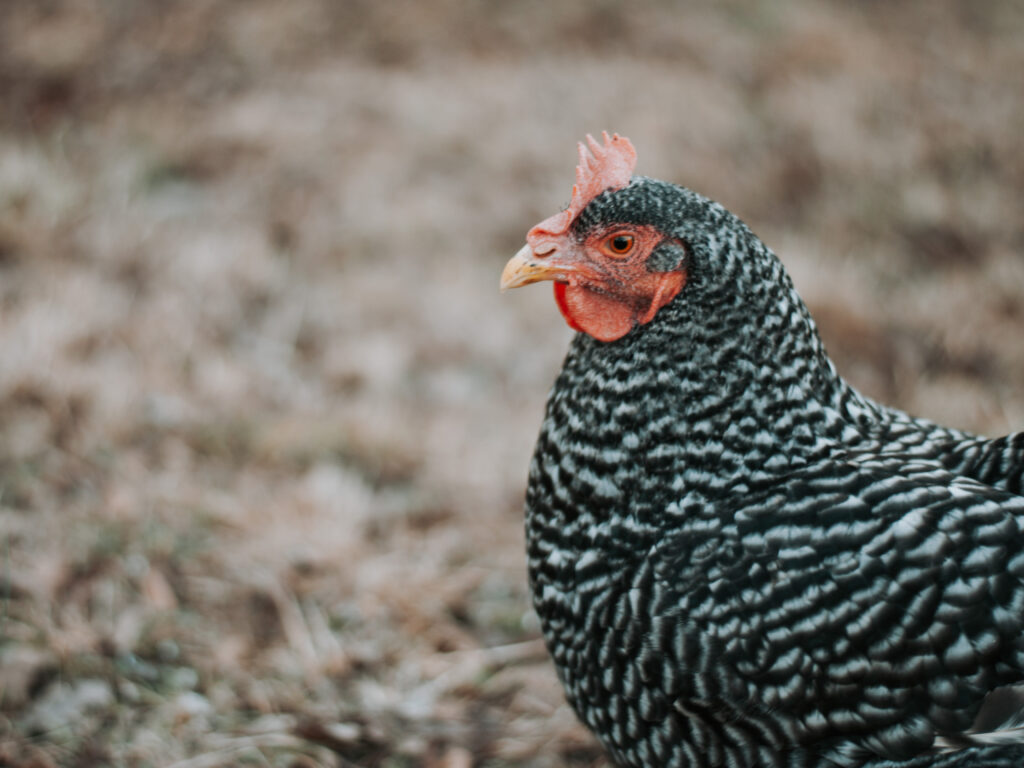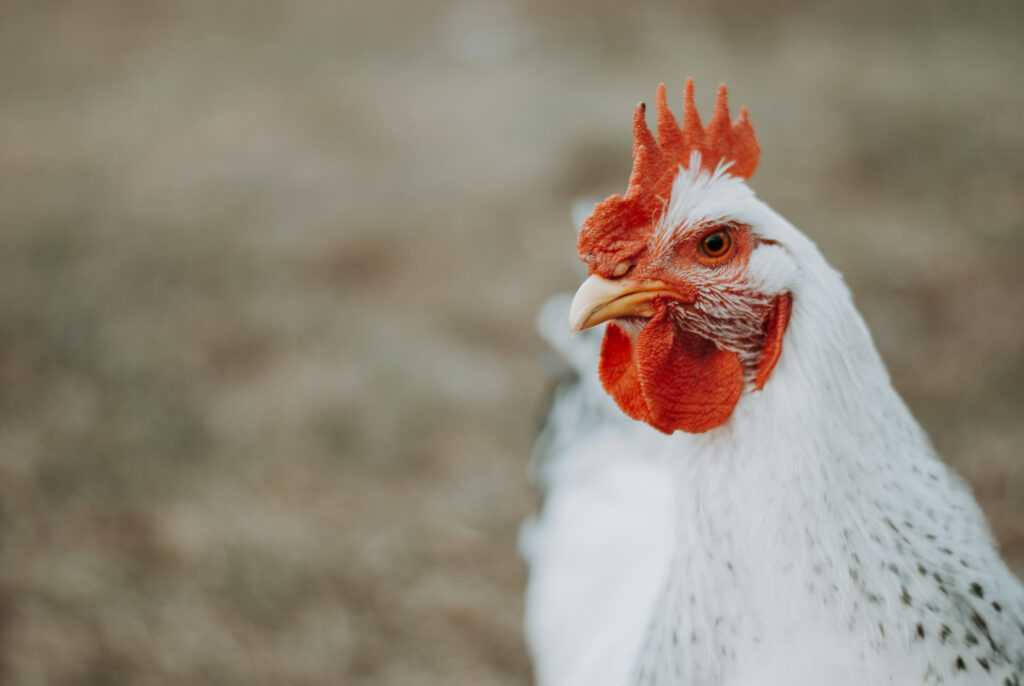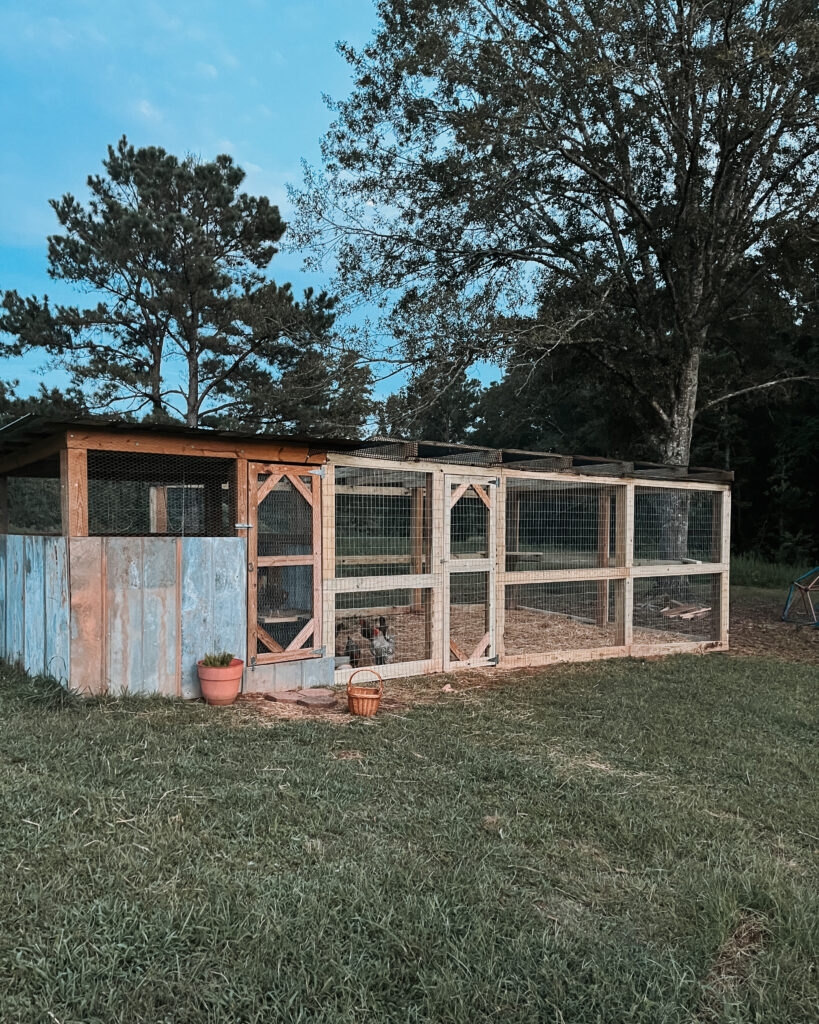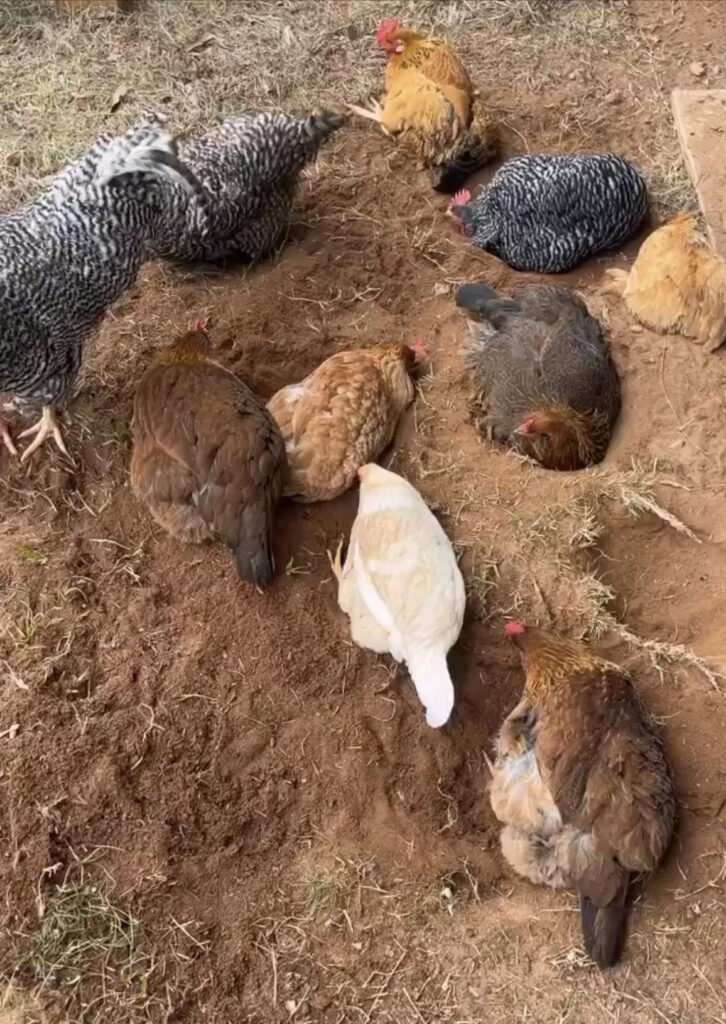Keeping Chickens can be overwhelming at first, but you’ll love all the benefits they bring. Here’s everything you need to know about keeping chickens.
Keeping Chickens
Chickens are great for first time farmers. They don’t need a lot of resources to get started, and they will produce fresh eggs and meat if needed. They are really the perfect dual purpose animal.
Keeping Layer Chickens

**This post may contain affiliate links which means I make a small commission at no extra cost to you. Read my full disclosure here.*
Laying hens are the perfect chicken to begin with. In addition to providing fresh eggs, they are easy to keep. While I could probably write a couple of blog post on laying hens alone, I’ll try to keep this post limited to the highlights. I don’t want to assume that everyone reading this knows what a laying hen is. I’ll start from the beginning.
A pullet is a young female chicken. Technically a pullet is less than one year old. A cockerel is a young male chicken. A hen is an adult female chicken, and a rooster is an adult male chicken. Most hens will lay eggs. There are a few exceptions to that.
What makes a laying hen different than other hens is the amount of eggs they lay. A good laying hen will produce one egg per day during the spring and summer months. Also, a laying hen can be eaten, but they are generally small without a large amount of meat. We culled eight roosters from our initial straight run chicks. We did eat them, but they were small and kind of tough.
More Chicken Articles You’ll Love
- Why Do Chickens Sometimes Lay Small Fairy Eggs?
- Chickens That Lay Beautiful Brown Eggs
- The Most Beautiful Chicken Breeds
- Will Baking Soda Hurt Chickens? Risks and Benefits
Roosters
Roosters are not necessary for hens to lay. They will lay an egg whether there is a rooster present or not (think female ovulation). However, the eggs will be unfertilized without a rooster.
If you are living in an urban setting like a neighborhood, roosters may not be allowed, but your hens will still lay. If roosters are something you are considering there are a few things to know. Roosters don’t like other roosters.
They are very territorial over their hens and will have nasty fights with other roosters. They can coexist if you have enough hens for multiple roosters. A general number is ten to twelve hens per rooster.
Also, Roosters are very noisy. They love to crow before daylight. Be ready for the noise if you keep one. Lastly, roosters can be aggressive. They are fiercely protective of their hens, and will sometimes attack anyone they deem threatening.
I personally love our big barred rock rooster, Bernard. He does a good job protecting our ladies, and brings so much personality to our flock. My girls are a lot more confident under his watch. He can be aggressive when provoked, but mostly he just wants to be respected. I don’t think I’d keep a rooster if I still had small children.

The Coop
Before you decide to get laying hens, you need to have a space for them. They don’t require a large space, but it should be adequate.
Chickens need a place that is dry, and protects them from the wind. They can survive in cold weather, as long as they have shelter. Secondly, they need adequate ventilation. The ventilation should be above their roosts so they are out of the wind when sleeping. Chickens produce a lot of moisture so inadequate ventilation will cause a lot of respiratory problems.
Also, roosts are a must. Chickens like to get to the highest places in the coop at night. I have found that 2×4 boards work best. They are flat so my flock can protect their feet in the cold.
They will need adequate nesting boxes. Hens tend to like private places to lay their eggs. I use five-gallon buckets attached the wall, and my girls love it. You will need one laying box per three hens.
The coop needs some sort of bedding. I have a dirt floor coop and use the deep litter method. I add layers of straw and wood chips when needed. This method creates a compost, which produces heat in the coop. Twice a year I clean it out and move the compost to my garden.
I installed wire around the base of my coop to help prevent predators from digging underneath. If you are wanting to free-range your flock, keep them in the coop for 24 hours prior to allowing them to free range.
Chickens will instinctively return to the coop at dusk because they know it is safe. Once they return, you simple close them up for the night. Last year we invested in an automatic chicken door. This turned out to be great for my flock. The door opens at daylight and closes at dark. If you would like to see more coop ideas check out my post here.

Diet
Chicken’s will naturally forage for insects and fodder. A chicken’s diet will largely depend on how you are choosing to manage your chickens. For example, If chickens are allowed to free-range dietary needs will be different than if they are kept in their coop.
Layer hens need a lot of calcium to produce egg shells. Typically, a layer feed will contain 4% or 4.8g of calcium per day. If your hens need extra calcium I prefer this brand of oyster shell. Too much calcium can be toxic to the hens, so give it to them free choice. This means putting it in a separate feeder so the hens can choose to eat it. Don’t mix it in with the feed.
During the winter months when the hens are laying less, I use a feed that is higher in protein. Generally I choose a feed that has 22% protein. This helps my hens stay warm while their calcium requirements are down. If chickens are free-ranging they will naturally eat more protein.
Chickens also require some grit to keep their crops clear. They will store food in their crop, which can become impacted. Grit helps to keep their crops clear. Free range chickens will naturally consume grit, however if you contain your chickens in a coop you may need to provide grit to them. Grit should be provided free choice. I purchase this grit for my flock.
Adding raw apple cider vinegar to your flock’s water will provide them with probiotics which can help decrease sickness. I add 1 cup of ACV to my five-gallon waterer.
Chickens also love scratch feed. This is a corn mixture that provides them with extra calories. Scratch grain is especially good for chickens in the winter when they are trying to keep warm. I sprinkle it on the ground in their run a couple of times a week. Be careful not to go heavy on the scratch gain.
This is like junk food for the chicken. They will fill up on the scratch and eat less of the good stuff. Adding herbs like oregano and garlic to your chicken feed will increase the hen’s immune system, and ability to fight illness.
Chicken Illness
Chickens are prey animals. For this reason, they don’t show illness until it’s pretty bad. There are a few common things that you should be ready for when raising hens. Chickens can get poultry mites from other birds. If the infestation goes unchecked, the chicken can become anemic and die.
The best way to fight poultry mites is prevention. Adding barn lime to the coop will help to keep things at bay. This has been used for hundreds of years as an antimicrobial. It does decrease the amount of bacteria in your deep litter which can keep it from creating heat during composting, but I feel that it is worth it to decrease mites.
I also add diatomaceous earth to my coop and roost. This can kill the mites before they make it to the bird. Diatomaceous earth can cause respiratory problems for people and the burns, so dust the coop while the chickens are not in it. Give the dust time to settle before returning the chicken.
If your hens so get poultry mites, immediately begin treatment. You will be able to see the mites around the wings and the vent. Clean out the bedding, and pressure wash the coop. Replace with fresh bedding, and wash every surface with the barn lime. Apply a new coating of diatomaceous earth. The chickens will most likely need an insecticide to get rid of the mites on their body.
Chickens love to dust bathe. This is the chickens’ natural defense against mites. Providing a spot for them to dust bathe is essential. Give them a dust bath of wood ash and diatomaceous earth to further prevent mites.
Hens can also become injured while being mated by a rooster. Recently one of my hens suffered a large wound under her wing from our roo, Bernard. Providing the hens with a saddle will help to protect the hens. Filing the rooster’s spur will also help to prevent injuries. When treating a wound on a hen always have a medicated ointment available.
I prefer this one. Chickens will peck any wound on another chicken, so the Hen Healer helps to seal off the wound and prevent pecking. To clean the wound I prefer this spray. However, I have used hydrogen peroxide and triple antibiotic ointment too. The wing wound took a long time to heal so I used all 3 treatments daily.
Bumble foot can occur commonly with chickens. This is an infection in the foot of the chicken that looks like a stone imbedded in the foot. The key to treating bumble foot is to get rid of the infection kernel. Wrap the chicken in a towel and soak the foot in an Epsom salt and warm water bath for ten minutes.
This should soften the kernel allowing it to be pushed out using your finger tips. This may require soaking for several days in a row, and in extreme cases require a scalpel. I highly recommend getting a vet to assist with the bumble foot if you believe it needs to be cut out.
Worms are another problem your chickens could suffer from. I use this natural worm treatment in my feed once a week. These are just a few of the problems we’ve dealt with. There are many more illnesses that can affect your hens.
Impacted crops and becoming egg bound are also common chicken health problems. Be sure to spend time with your flock daily and pay attention to any hen that is acting sluggish or lethargic. I suggest referencing this book.

Learning As You Go
This is only a small part of the things I’ve learn about keeping chickens. The best thing you can do to learn more about your flock is to watch their behaviors. You will quickly learn what your chickens prefer, and the social order of your flock. You will also notice if something doesn’t seem right.
Try to look your flock over weekly. Look at their legs and feet. Check their vents, and under their wings. Feel their crops to ensure they are emptying. If you are finding it hard to inspect some of the chickens, try looking at them at dusk. I have to catch my alpha rooster at night to inspect him. Otherwise, he doesn’t like to be held.
Incorporating New Chickens Into Your Existing Flock
Since getting my original flock of seven chickens, I’ve been slowing incorporating more chicks into my established flock. I have never incorporated hens or roosters but rather pullets and cockerels. However, my last set of Delaware Broilers had reached maturity prior to joining the main flock.
When the chicks are 7-8 weeks old, I start by containing them in a small dog pen near the main flock. This allows everyone to meet without the danger of someone getting hurt. I do this daily for about a week. I allow my main flock to free-range around my contained chicks just so everyone has plenty of space.
Immediately putting the chicks in the coop with an established flock will cause a lot of bullying. After everyone has met in safety, I put the dog crate in the coop for the night.
I give the flock some time to get use to each other by moving the chicks in and out, while still contained for at least another week. I watch how the flock reacts around the chicks, and the chicks reaction to the flock.
This process can be slow because chickens have to establish a pecking order. I slowly allow everyone to free range together out in the open without a pen. This gives everyone plenty of space. Last I remove the dog crate at night, and let everyone roost together. Slowing integrating the flock seems to be the best for everyone.
My broilers were more mature when I incorporated them. They were around 16 weeks old. I allowed everyone to free range during the day. They free ranged together daily for about a month, while still going to separate coops at night. Once I felt comfortable that they were ready, I put the broilers into the coop for the evening.
I kept them in the coop for 24 hours so they would know it was home, and they were in a new flock. There were some growing pains with my old hens and a new roo, but overall everyone settled in quick.
I love that more people are interested in keeping chickens. They are a great way to become more self-reliant, and are also very entertaining.
Check out my other chicken posts:
[…] Keeping Chickens […]